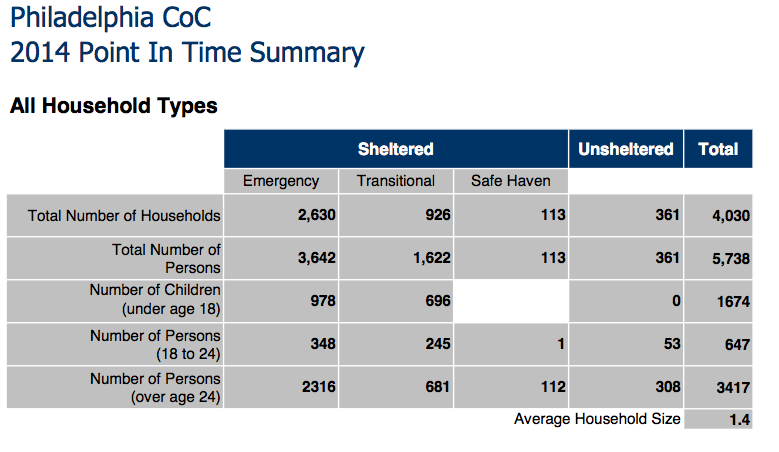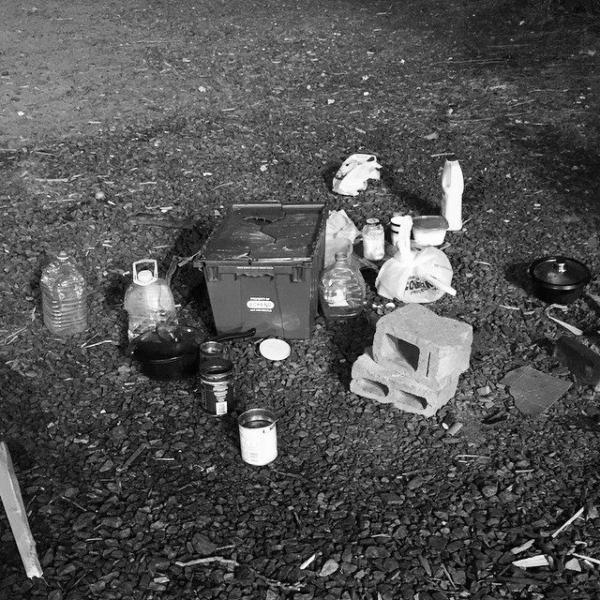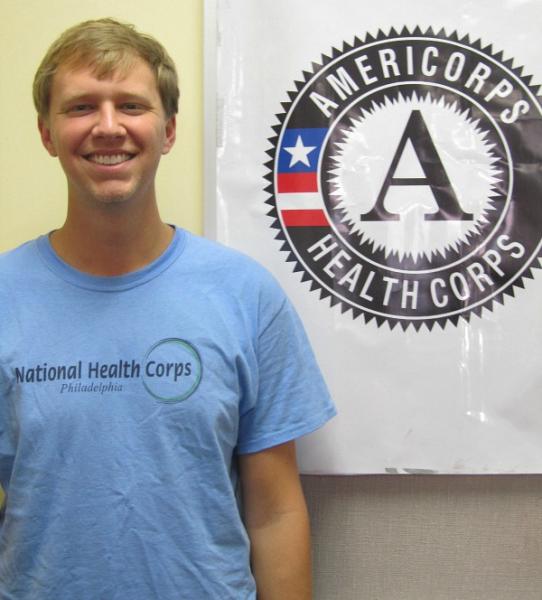As Philadelphia rapidly transitions from the unbearable heat of August to the bitter cold of December, social services organizations are hard at work to assess the state of homelessness throughout the city. Project HOME, a nonprofit organization that works to provide housing to the chronically homeless of Philadelphia, coordinates four evenings per year (one for each season) to account for the number of homeless individuals. This data is meant to assist the city in allocating resources to better serve the more than 5,000 homeless individuals that are both sheltered and unsheltered throughout the city.
Project HOME’s 2014 fall Point in Time (PIT) count began on the evening of Wednesday, November 19 and ran through the early hours of Thursday, November 20. The fall count is especially important, as the winter months see a drastic increase in the use of emergency shelters. On evenings when the temperature feels as if it is near or below 20 degrees Fahrenheit, the Office of Supportive Housing (OSH) declares a “Code Blue.” A Code Blue mandates twenty-four hour outreach coverage, opens access to vacant beds in emergency shelters, and allows clients to remain indoors throughout the day. Therefore, in order to prepare for Code Blues, the city needs the PIT count data to be as accurate as possible.
My host site, Prevention Point Philadelphia, was tasked with surveying the neighborhood of Kensington- a region of Philadelphia that, ever since the fall of the city’s industrial sector, has witnessed a high level of homelessness. Throughout the evening and morning, we counted 180 homeless individuals spanning the area between Penn Treaty Park and Frankford Transportation Center. The evening also gave us the opportunity to inform individuals about resources available through the OSH and even transport a handful of people to local shelters. Overall, there were 542 unsheltered homeless individuals identified throughout the city between 11 PM and 3 AM.

When an individual in our area requests shelter, they enter a cycle coordinated by the OSH. Different pathways exist for single men, single women, families, and youth. Using a single man as an example, the first stop is the Homeless Centralized Intake Service at 802 North Broad Street (commonly referred to as 802) where case managers work with men to look for permanent housing. As the afternoon proceeds, 802 will direct the man to an open shelter and, as the sun rises the next morning, he will return to 802 for continued case management. This cycle continues until, theoretically, permanent housing is found. Like all other major American cities, however, there is a scarcity of permanent housing for chronically homeless individuals in Philadelphia. Therefore, the never-ending back-and-forth between 802 and shelters can prove to be extremely discouraging, causing some individuals to resist entering the shelter system.
Coming across encampments of individuals complete with newspaper beds and cinderblock seats forced me to realize the unsettling truth of how the chronically homeless are forced to live. These individuals are our veterans, our peers, and our coworkers. Without expanding access to social services and case management, we will continue to marginalize a population that is in desperate need of assistance. The work done by Project HOME and similar organizations is inspiring. Holding true to their mission statement that “none of us are home until all of us are home,” their team of staff members and volunteers work tirelessly to break the cycle of poverty and homelessness.

If you are interested in more extensive data from previous Point in Time counts, you can find a breakdown of the winter 2014 count here.

This post was written by PHC member Jeff Roberson.
Jeff serves at Prevention Point Philadelphia as a Primary Care & Hepatitis C Outreach, Linkage & Referral Specialist.
